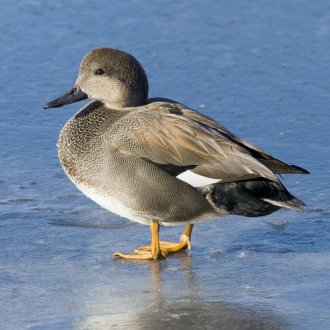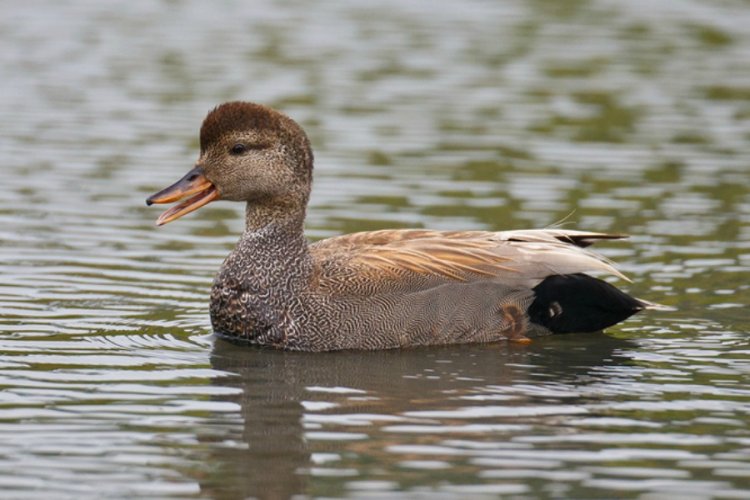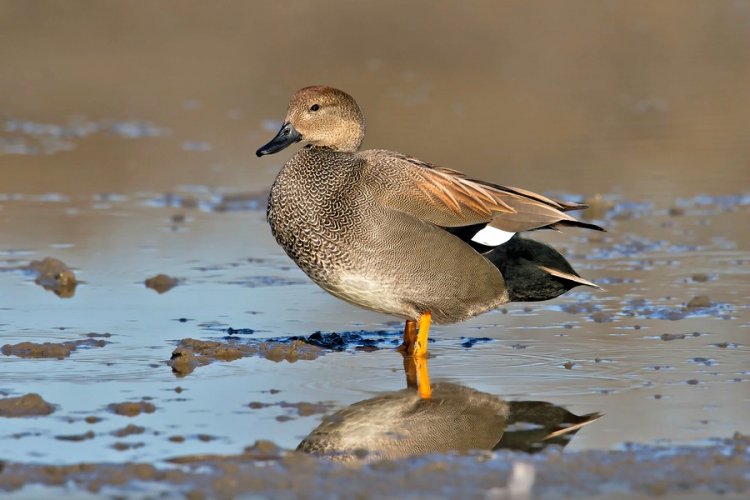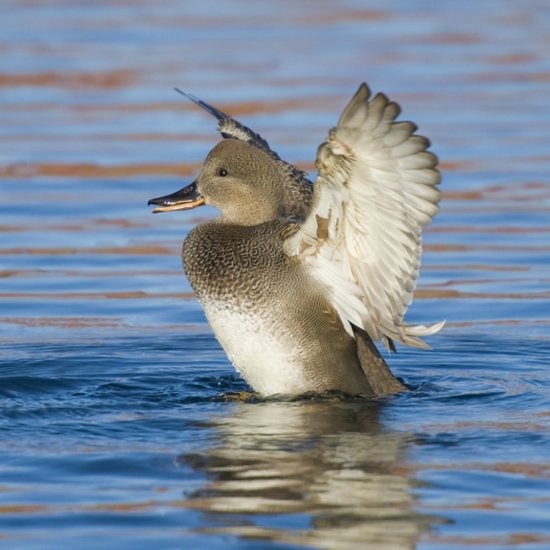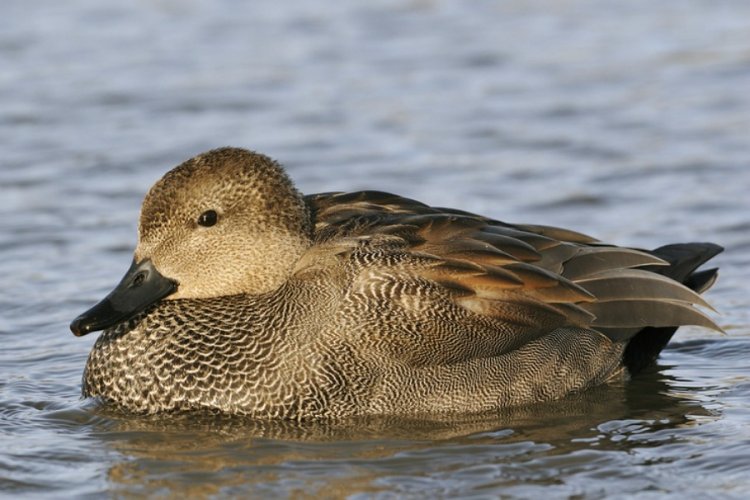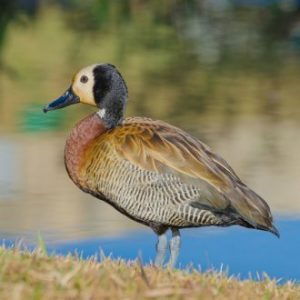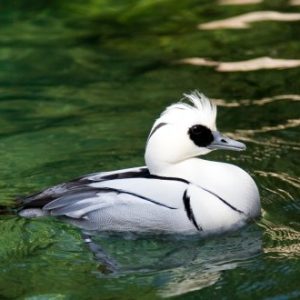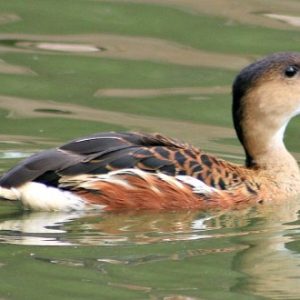Gadwall Ducks, Anas Strepera, may not be the flashiest of ducks but are captivatingly patterned in contrasting browns, grays, creams, and black. Males have an appearance reminiscent of a tweed-clad Oxford professor. Males have a rounded and tall head, orange legs and feet, and a black bill. Females look very similar to female Mallards, but the female Gadwall has white speculum feathers. Males will molt into non-breeding or eclipse plumage, which looks very similar to the female coloration.
Gadwalls are similar in size to Mallards as well. They are classified as Dabbling Ducks as they feed by dabbling with their heads underwater.
Gadwall Ducks do very well as members of a mixed collection. They are neither aggressive nor overly timid.
Range: Although Gadwalls were originally found more in western North America, their range has been expanding in recent years to stretch further east. They are most commonly seen in the central areas of North America. Gadwalls are also found in Europe and Asia. Gadwalls are migratory, and populations move to Southern locales during winter and up to northern breeding grounds in spring.
Habitat: Gadwall Ducks inhabit the Great Plains, open wetlands, marshes, and prairie potholes, and tundra during the breeding season. Upon migration and throughout the winter, they can be found in lakes, large ponds, reservoirs, fresh and saltwater marshes, muddy edges of estuaries, and even in city parks and sewage ponds.
Status in the Wild: Gadwall Ducks were once uncommon, but since the 1980s have been growing in population.
Status in Aviculture: The understated coloration of these ducks, makes them more or less uncommon in aviculture.
Breeding: Gadwalls can be successfully bred in captivity. They tend to start pairing up in Fall or early Winter. The breeding season officially starts in spring. One-year-old birds often will produce eggs, and you can count on eggs in their second year. Nesting is on the ground, and they often will take advantage of nest boxes. Clutch is usually 8-10 pinkish-white eggs. Incubation takes 25 days and is accomplished by the female. Ducklings are quite self-sufficient upon hatching but are tended by the female until fledging at 48-56 days old. Ducklings are hardy and uncomplicated to raise.
Lifespan: Gadwalls can live 15-20 years, or perhaps even longer. The oldest known individual was 19 years 6 months old when it was shot by a hunter.
Size: Gadwalls are 18-23 inches in length with a wingspan of 31-36 inches. They weigh between 2 and 2.25 pounds.
Housing Requirements: Gadwall Ducks do well in captivity. They are cold hardy and quite hardy and adaptable. They will need an adequately large enclosure with a cover as they do fly. Water for swimming as well as for dabbling is necessary as well.
Diet: In the wild, Gadwalls eat submerged vegetation, as well as water insects, snails, and other invertebrates. During the breeding season, protein requirements are higher, and the amount of animal matter consumed is, therefore, higher as well. A commercial waterfowl diet that is 18% protein would be very appropriate although providing diversity in vegetation and more protein during the breeding season would be optimal.
Miscellaneous Notes: Gadwalls are an example of a species taking advantage of habitat destruction. With the conversion of forested landscapes to agricultural or cleared land, these birds who enjoy open land, are expanding their range and growing in population. Gadwalls even seem to be thriving on invasive aquatic plants such as the Eurasian Water Milfoil.

